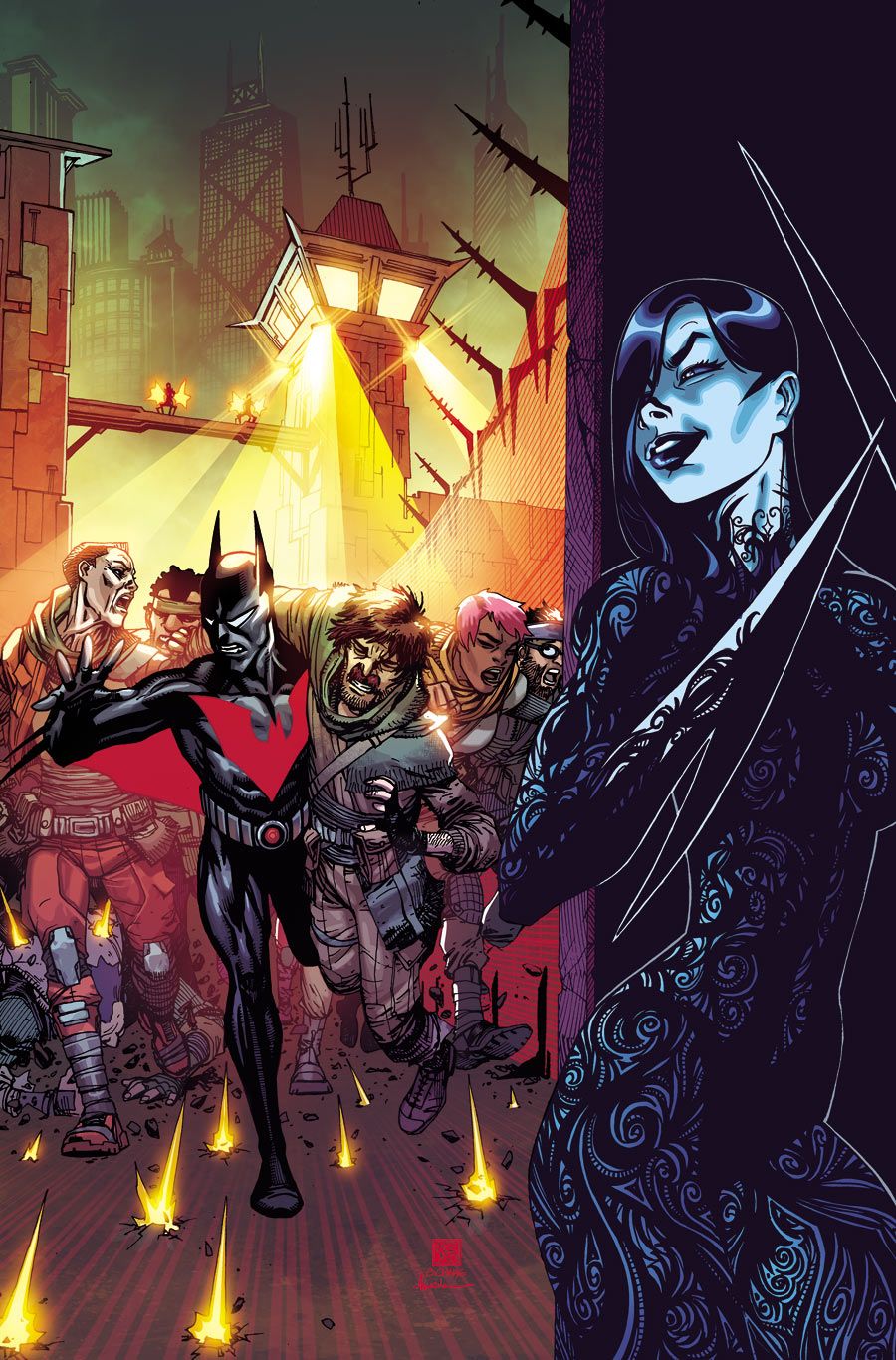"Batman Beyond" #2 has Dan Jurgens and Bernard Chang continue their post-"The New 52: Futures End" series, adding in elements from both "Futures End" and the original "Batman Beyond" animated series. The problem is, I'm not convinced that there's a natural halfway point that exists between the pair.
The second issue is set entirely within the Lodge, a processing center for Brother Eye to slowly wipe the individuality of its prisoners and, for the most elite, to transform into killer cyborgs. Jurgens uses an adult Barbara Gordon to be a guide for Tim Drake as he struggles to survive, even as Brother Eye's forces close in on them. It's a sound strategy -- Tim gets walked through this new setting along with new readers -- but it's hard to keep from feeling like this might not sit well with fans of the original "Batman Beyond."
There are a lot of familiar faces from the animated series, like Max, Inque and the Jokerz, but it might as well have been any other random present-day DC Universe characters in their stead. Between them being enslaved by Brother Eye and Terry McGuinness' absence, I'm not sure what sort of lure still exists for people not interested in an apocalyptic DC Universe. To be fair, taken strictly as the robot apocalypse, it's not a bad comic. Jurgens mixes mass destruction with the horror of having one's body taken over by an outside force (the same sort of elements that work so well in zombie stories) and keeps the pace moving at a good clip when you consider that a lot of this issue is mass dumps of exposition. However, it doesn't change the fact that this is a very odd take on a "Batman Beyond" comic.
Chang's art is attractive as ever. His characters are drawn well, without relying on costumes to have readers tell them apart, and the backgrounds make the Lodge feel like an awful, rundown place, which fits with Jurgens' script. This setting provides a nice contrast for the fluid, clean look of the enslaved Inque, whose lack of any hard edges make her stand out in a jagged and rough world. Chang's shifting over to a rougher, scratchy ink style for individual panels whenever we get an attack by Brother Eye is a fun little touch; it's the visual equivalent of bolding a specific word, and it gives a momentary jolt to the flow. Marcelo Maiolo works well with Chang, too; when we start zooming in on a character's face strapped into Brother Eye's chair, the slow stripping away of colors until it's nothing but black, white and red adds an awful starkness to the moment, impossible to turn away from what's happening.
"Batman Beyond" #2 works about as well as I think it can as an amalgamation of two different ideas and properties. Taken strictly as one or the other, I think it could really soar; Jurgens and Chang have the chops to pull it off. However, right now, its two disparate halves don't feel quite like they connect -- the original "Batman Beyond" was dark but that was a walk in the park compared to this setting -- and the dissonance between them keeps it from entirely working.

